Worzella’s Honored With HOF
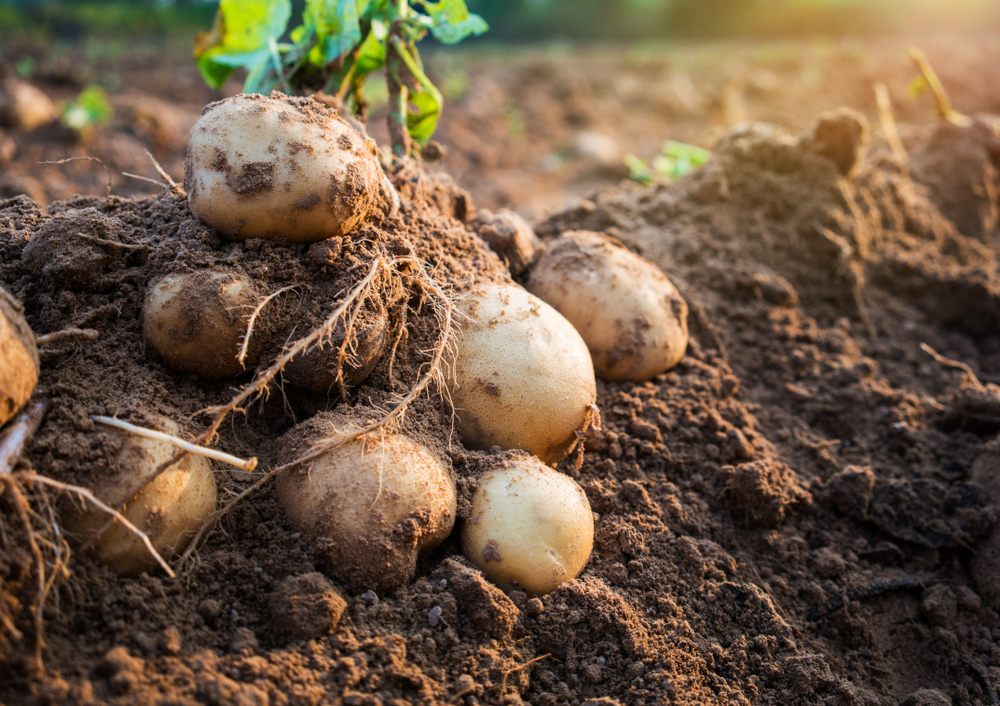
Long-time potato and vegetable growers Norm and Marv Worzella of Worzella & Sons, Inc., Plover, Wisconsin, were inducted into the Wisconsin Potato & Vegetable Growers Association Hall of Fame at the industry’s annual awards ceremony held February 3, 2021.
The Wisconsin Potato & Vegetable Growers Association Hall of Fame honors lifetime achievement in the development of the state’s potato industry. It is the intention of the WPVGA to continue to honor individuals who have made significant contributions to the potato industry in Wisconsin by making annual Hall of Fame inductions.
The following is a brief biographical sketch of this year’s WPVGA Hall of Fame inductees.
In 1953, Clarence Worzella, Norm and Marv’s father, started potato farming on a 40-acre parcel of land with an irrigation system. After graduating high school, Norm and Marv were given the opportunity to pursue additional schooling or join Clarence in the family potato business. They chose to work with their dad, a decision neither of them regrets.
Today, Worzella & Sons of Plover, Wisconsin, grows 1,800 acres of potatoes, along with 3,400 acres of other vegetable crops.
“We are proud of the business’s growth, which is largely attributed to the dedicated employees we’ve had in our 60 years of farming,” says Norm Worzella, CEO of Worzella & Sons, Inc. “We are glad to work alongside our sons, who are the third generation of this business.”
Marv, who is CFO of Worzella & Sons, Inc., adds, “We learned from our dad from a young age on. We started working with Dad in 1955, and we incorporated in 1964. Dad worked side-by-side with us and taught us how to grow vegetables and get started in farming.”
Norm and Marv’s parents, Clarence and Regina, were community-minded people who generously donated to many organizations and causes. They instilled in Marv and Norm the importance of giving back, and Worzella & Sons has been able to make donations that are crucial to the well-being and future of the Wisconsin potato and vegetable growing industry.
Working with Louis Wysocki, the WPVGA and Village of Plover, the Worzellas participated in a land exchange, discontinuing to farm a parcel of fertile land to make room for the Little Plover River Watershed Enhancement Project. The goal of the project is to improve the health of the Little Plover River and the quality of life of the surrounding community.
The Worzellas also donated more than 20 acres of land to the Farming for the Future Foundation for a new Discovery Center to be built along the Highway 39 corridor, in Plover, within the next two years. The Discovery Center promises to connect Wisconsin families and the agriculture industry through education and experience.
Marv and Norm have also been instrumental in donating for causes such as improvements at Lake Pacawa Park, in Plover.
The brothers are honored to be inducted into the WPVGA Hall of Fame.
Being in the business of farming for over 60 years, they have operated numerous pieces of equipment and worked in each part of the farm, saying a big part of a successful farm is to keep up with technology.
And as the farm expanded, bigger equipment was needed. Norm remembers harvesting potatoes and boxing them up by hand. “I didn’t like picking and grading them, but I picked a few,” he says. “Now you have Lenco 12-row harvesters.”
“I did some spraying with a little sprayer,” Norm adds, “and then we got a bigger sprayer that we pulled with a rope. There were no air-conditioned tractors back then. You sat in the open. I couldn’t even run the machines we have now.”
“We are proud to have had the opportunity to provide better equipment for our employees to do their jobs more efficiently,” he says.
Marv says he liked getting up every morning, going out into the field and seeing how the potatoes were doing, watching them grow. Even though he is 84 years old now, he visited the fields, in 2020, before going to Florida for some well-deserved rest and relaxation.
“I like watching the potatoes grow, from seed potatoes to plants and then to being harvested,” Marv relates.
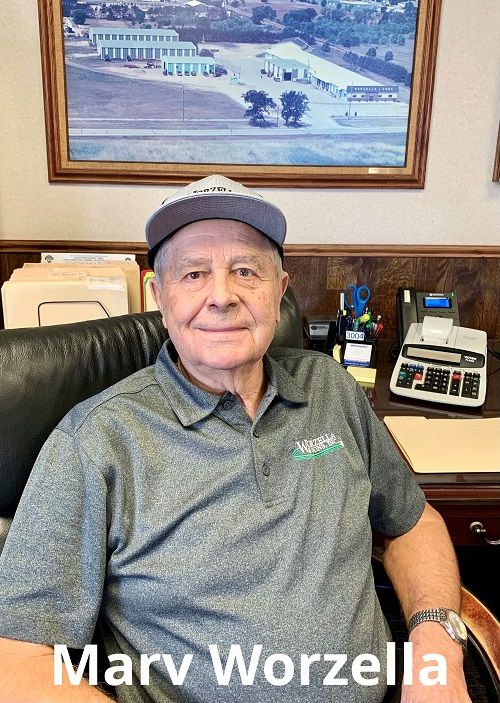
Marv continued with his dad’s philosophy of working hard when the work needed to be done so he could take time to travel in the winter months.
In 1961, Marv was called up for the National Guard due to the Berlin Crisis. He was stationed in Washington but never activated to go oversees where he was qualified to serve as a medic.
Marv has managed the packing warehouse, but now mainly oversees the financial part of the business. With the WPVGA , Marv was involved in the bargaining committee that negotiated contracts with the vegetable processors.
In addition to his work at Worzella & Sons, Norm has been involved in several organizations, serving on the WPVGA board, as a volunteer fireman for the Village of Plover, director of the Bank of Plover (now known as BMO Harris Bank), as a member of the Planning Commission for the Village of Plover and as a lay minister at his church.
Norm attended several conventions as part of the United Fresh Fruit and Vegetable Organization. Attending these provided a vast amount of information for the business, but perhaps the most important information that he learned resulted from trips taken to various countries.
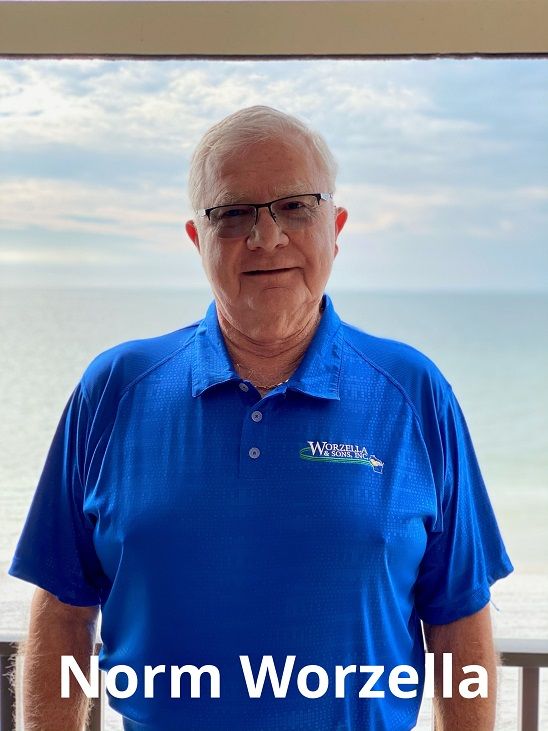
The list is extensive, but the countries include those in South America and Africa, as well as China, Egypt, India, Russia and Australia.
Being able to see farming in a variety of climates and soils, and the different machinery that was used, the travels taught Norm that there was not one set way to farm. “The U.S. was so much more advanced with technology,” he says, “and we took for granted how ‘easy’ it was at the time for us.”
Both Marv and Norm’s favorite part about farming continues be seeing the growth of the business and watching the crops, from planting to harvest.
They have also enjoyed developing relationships with suppliers and other farmers. Norm often drives around looking at the crops and visiting other growers to see how their operations are going, always hoping to hear good news.
The brothers stay active in the business by checking in with their sons to see how things are going and if they need help. During potato storage, Norm is helping everyday with picking.
Marv enjoys all parts of farming, from the start to finish of each season, although farming is a gamble, never knowing what yields and returns to expect, which is the most stressful part of the business for him. He is still involved in overseeing the financial aspects of the business.
Marv and Norm’s sister, Shirley Sankey, is the Secretary/Treasurer for Worzella & Sons. While she was officially hired on the farm in the early 1970s, Shirley worked in the fields and packing warehouse as a young child and all the way into high school. Now, semi-retired, she still oversees the office staff. Shirley managed everything from employees to daily office and financial responsibilities. Her daughter, Trina, is the President of Worzella & Sons.
Marv and his wife, Audrey, have been married for 58 years. They have three children, Perry, Tim and Tanya, and six grandchildren. Sadly, they lost a daughter, Lisa, in 1990. Marv and Audrey spend the winter months in Naples, Florida, where Marv enjoys going for walks, playing sudoku and golfing.
Norm and his wife, Marie, have been married for 56 years. They have four children, Steve, Shelley, Sandy and Scott, 11 grandchildren and three great-grandchildren. They spend the winter months in Fort Myers Beach, where Norm enjoys deep sea fishing.
Come Visit A Wisconsin Dairy
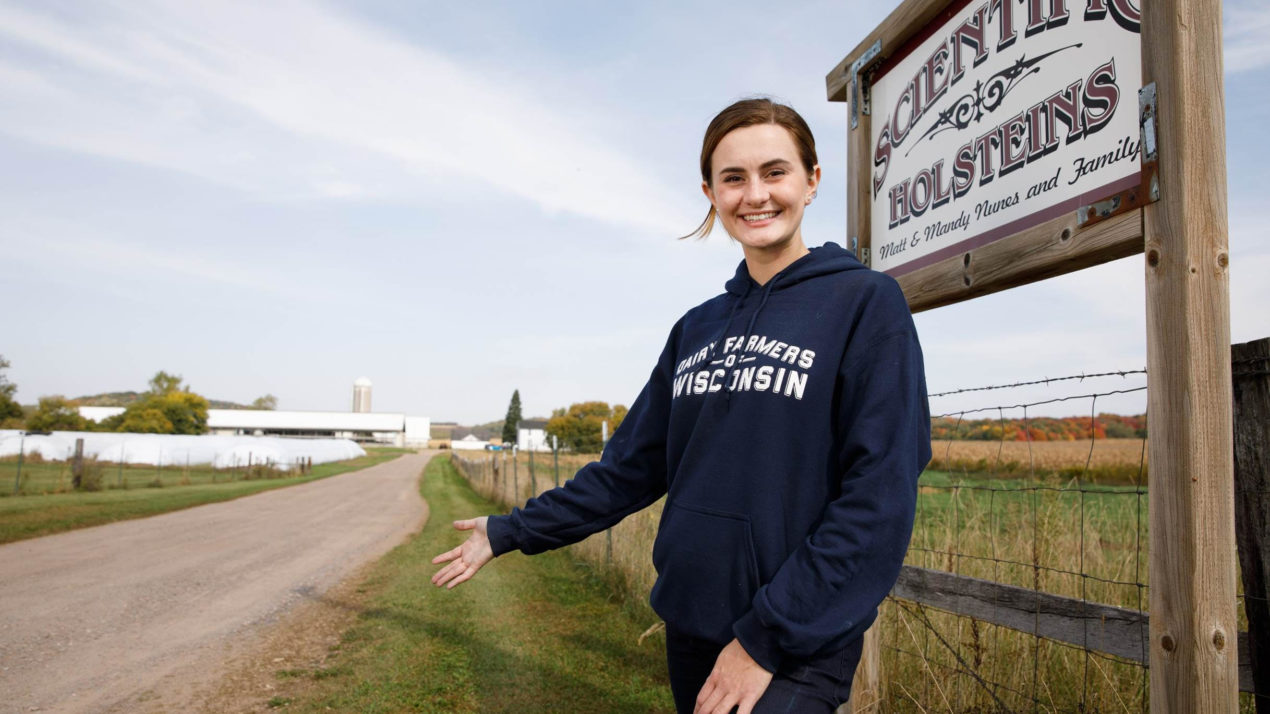
While schools are closed and millions of kids learn virtually at home, Dairy Farmers of Wisconsin (DFW) and the Wisconsin Department of Agriculture, Trade and Consumer Protection (DATCP) share a unique opportunity for kids to visit a farm without leaving the house. The two groups joined forces to create and launch a virtual farm tour of Scientific Holsteins in Chippewa Falls, Wisconsin, hosted by Julia Nunes, Wisconsin’s 73rd Alice in Dairyland.
“Kids enjoy seeing where their food comes from and who cares for the animals, so I’m excited to showcase my family’s dairy farm and share our dairy story,” said Nunes. “Dairy plays an essential role in a sustainable food system, and Wisconsin dairy farmers have dedicated their lives to feeding communities across the nation.”
Each year, 90,000 fourth grade students study a robust Wisconsin unit as part of the Social Studies curriculum. Students learn about Wisconsin’s heritage, culture, careers and communities, making the state’s $45.6 billion dairy industry a natural fit.
“It’s important to help kids understand why Wisconsin is America’s Dairyland and that dairy is good for their bodies, our community and the environment. This virtual farm tour is an excellent tool for the fourth-grade curriculum, and we’re thrilled to offer it as another learning opportunity from home,” said Suzanne Fanning, Senior Vice President and Chief Marketing Officer at Dairy Farmers of Wisconsin.
The virtual farm tour is geared toward grades 3-5 with an emphasis on fourth grade and is available for download at WisconsinDairy.org/Farm-Tour.
Upcoming Event Highlights Policy Solutions for Meat Processing
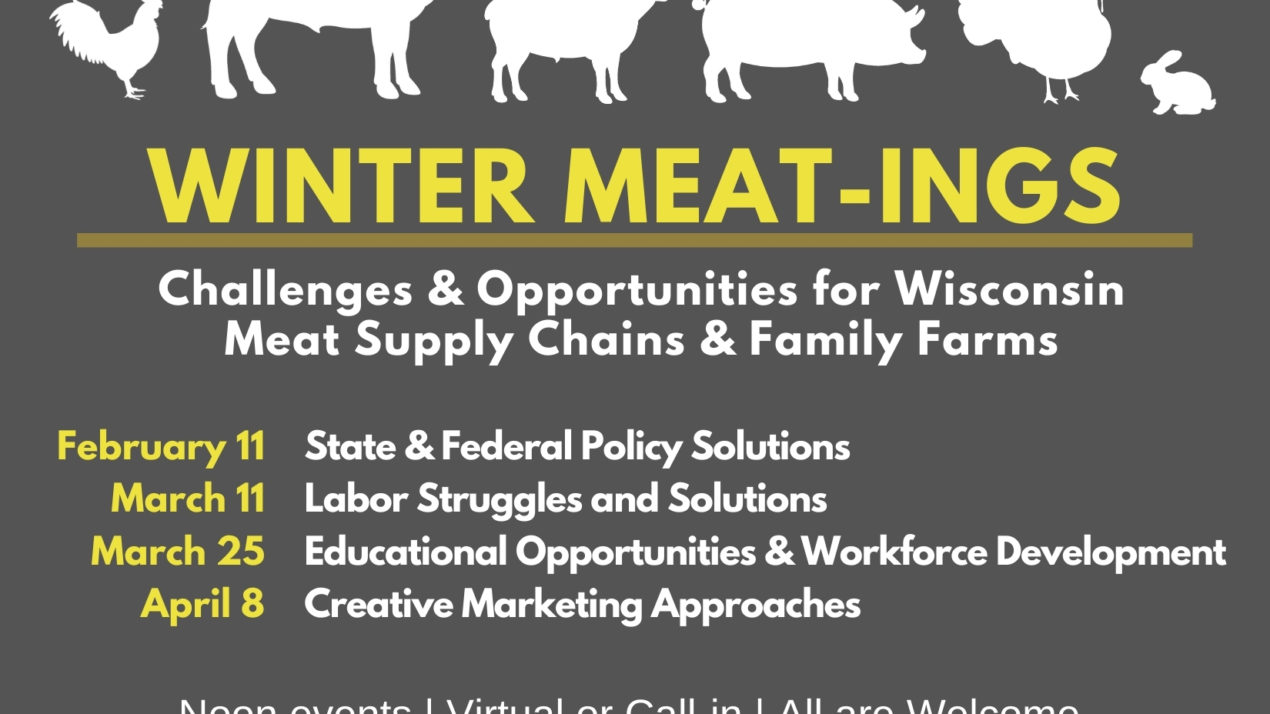
Wisconsin Farmers Union’s “Winter Meat-ing” series on the challenges and opportunities around meat processing continues from 12-1pm on Thursday, February 11. The free and virtual event is open to the public and will focus on State and Federal Policy Solutions. Guest panelists will include Wisconsin Department of Agriculture, Trade & Consumer Protection (DATCP) Secretary Randy Romanski, Montana Farmers Union President Walt Schweitzer, and National Farmers Union Vice President of Advocacy Mike Stranz.
“Rising interest in local food, growth in direct marketed meats, a lack of labor force and training for butchers, and increasing vertical integration in meat processing are a few of the factors that have challenged meat processing capacity,” notes WFU Membership & Education Organizer Kirsten Slaughter. “WFU recognizes that this is a multi-faceted issue, so we’re striving to give farmers, processors, rural leaders, and other stakeholders a chance to come together in search of creative solutions with this series.”
Recent WFU Meat-ings have covered farmer and processor perspectives, mobile and on-farm processing, and cooperative and community solutions. Upcoming topics will include:
· February 11 – State & Federal Policy Solutions
· March 11 – Labor Struggles & Solutions
· March 25 – Educational Opportunities & Workforce Development
· April 8 – Creative Marketing Approaches
On Feb. 5, Governor Tony Evers announced a three-pronged plan to bolster local meat processing infrastructure in Wisconsin. The measures include creating a meat processor grant program to incentivize innovation and expand capacity, as well as a Meat Talent Development Program to target workforce development. The budget also includes adding additional food inspector positions at DATCP to meet the growing demand.
“Meat Processing Infrastructure was one of the 2020 Special Orders of Business set by the grassroots Farmers Union membership, and it’s an issue that has become even more critical in light of the supply chain struggles around the pandemic,” said Wisconsin Farmers Union President Darin Von Ruden. “We’re seeing some inspiring movement on potential policy solutions to build up meat processing capacity and address some of the labor challenges in this sector. We invite others to hear about innovative approaches and join us in seeking solutions as this series continues over the next few months.”
“The resiliency of our state’s meat processing industry is critical to the success of our agricultural economy and our state as a whole,” added DATCP Secretary-designee Randy Romanski. “In addition to the significant investments Governor Evers has proposed to support Wisconsin meat processors, the input of all those along the meat supply chain will be important in developing long-term solutions. These gatherings are a way to start those conversations.”
RSVP for upcoming Meat-ings at www.wisconsinfarmersunion.com/events. Learn more about this topic and potential solutions at www.wisconsinfarmersunion.com/processing.
DNR Proposes Unique Valentine Gift
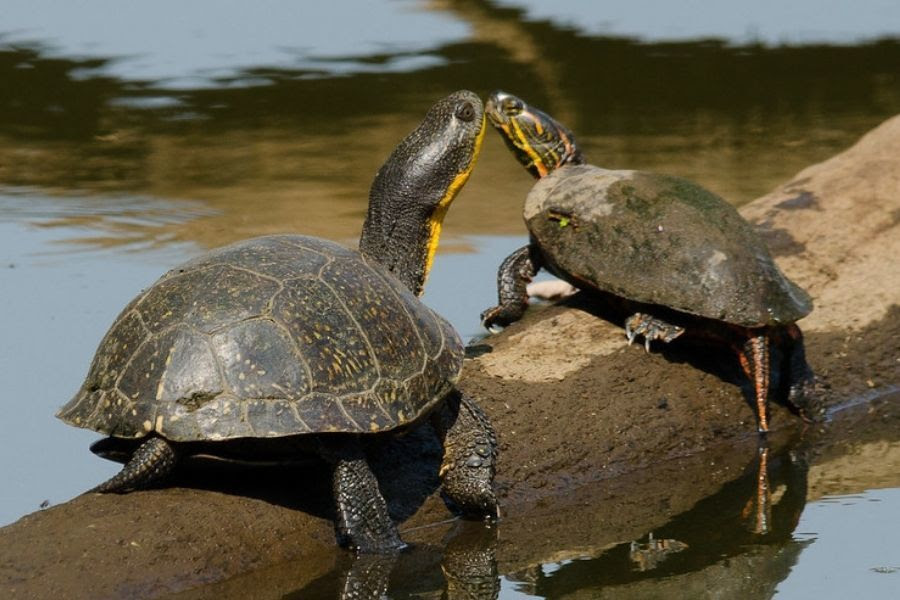
Double your love for nature this Valentine’s Day by donating to the Wisconsin Department of Natural Resources’ (DNR) Endangered Resources Fund. All donations made through your Wisconsin income tax form are matched and go directly to conserve rare plants, animals and State Natural Areas.
Tax filing season opens Feb. 12 and all donors can print a card to share with their valentine. For tax year 2020, the Endangered Resources donation is found on Form 1, line 21a; for part-year/ non-residents filing Form 1NPR, it is on line 55a. Look for the donations section with your tax software, or let your tax preparer know you want to donate to the Endangered Resources Fund. Learn more about how to donate and print off a Valentine’s Day card to acknowledge your gift on the DNR’s tax check off webpage.
“Donating to the Endangered Resources Fund is a quick and easy way to give back to nature,” said Drew Feldkirchner, DNR Natural Heritage Conservation Program Director.
Card designs celebrate progress made possible in part by donations to the Endangered Resources Fund.
- Karner blue butterflies: Wisconsin has the world’s largest population of this federally endangered species. Habitat protection and restoration work by DNR partners and landowners helped lift this beautiful butterfly and contributed to a 30% overall population increase at recovery sites in 2020 from 2019.
- Little brown bats: These voracious eaters of mosquitoes and agricultural pests are an essential part of Wisconsin ecosystems but have been decimated by white-nose syndrome (WNS), a deadly disease of hibernating bats. Donations help DNR bat biologists assist partners conducting the first vaccine trials in the wild to help bats fight WNS, monitor populations and aid other research to guide recovery actions.
- Calypso orchids: Wisconsin has 48 species of native orchids and the beautiful Calypso orchid is one of the rarest. Tax form donations help staff train volunteers to check on this rare plant’s populations and manage State Natural Areas to protect the habitat these plants need.
- Painted and Blanding’s turtles: Wisconsin has 11 turtle species, 4 of which are endangered, threatened or of special concern. Blanding’s are a species of special concern, while painted turtles are common. Donations help fund the Wisconsin Turtle Conservation Program, which enlists Wisconsin residents to help report deadly road crossings for turtles, along with other turtle monitoring and nest protection efforts.
“We’re grateful to everyone who donated in past years,” said Feldkirchner. “Our NHC 2020 Field Notes is filled with stories of the progress your donations have made possible. We ask you to donate again to help us do more great work together. Conservation is a team effort.”
In Wisconsin, more than 400 wildlife species and 300 plant species are endangered, threatened or declining. Donations to the Endangered Resources Fund pay for work by staff from the DNR Natural Heritage Conservation program to monitor these rare species, to coordinate, train and fund volunteer surveyors, and to protect and restore habitat for endangered, threatened and declining species.
Donations also help the DNR control invasive species and conduct other activities to maintain hundreds of State Natural Areas, protecting unique landscapes and natural features. These special places also provide refuge to 75% of Wisconsin’s endangered and threatened wildlife species and 90% of our endangered and threatened plant species.
Dairy Business Urges Labeling Action
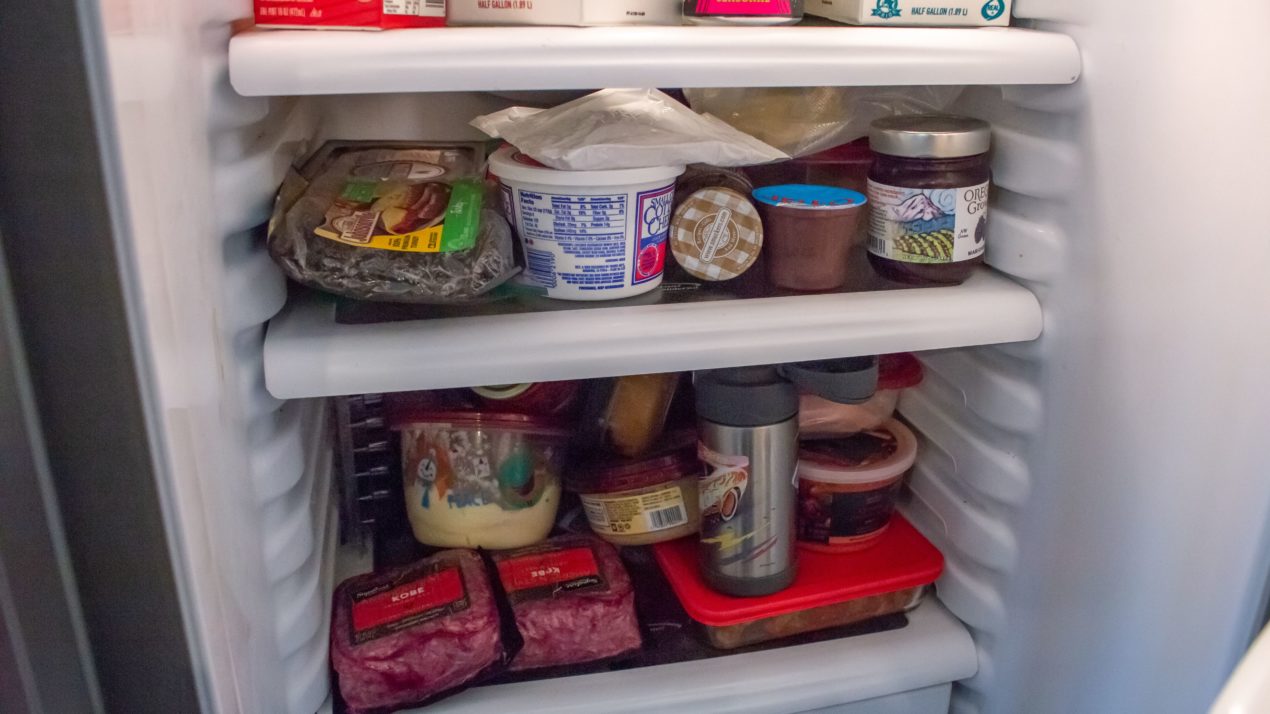
Standing up for customers and farmers, the Dairy Business Association today pressed the state Senate to approve legislation aimed at stopping the use of misleading labels on imitation dairy and meat products.
The Senate was holding a hearing on bills that seek to ban the labeling of food as milk or as a dairy product or ingredient if the food is not made from the milk of a cow or another hooved mammal. Another part to the proposal would essentially do the same for meat products.
“Parents who are deciding what to feed their families deserve transparency,” DBA President Amy Penterman, a mom who farms in northwestern Wisconsin, said. “The variety of beverages and other foods being misrepresented as real dairy seems to grow by the day. Customers should have options, but misleading those customers about what’s in their food is wrong.”
A number of other states would have to follow suit for the dairy measures to become law in Wisconsin, under federal interstate commerce rules. Some states have already done so.
Chad Zuleger, associate director of government affairs for DBA, told the Senate Committee on Agriculture and Tourism that the bills also would protect dairy farmers and processors from being treated unfairly.
“The federal government’s failure to enforce existing standards of identity for milk and other dairy products has made it necessary for states like Wisconsin to act,” Zuleger said.
This failure also raises concerns about how well the government will be able to handle emerging labeling concerns about plant-based products that imitate meat as well as lab-grown cultured tissue, he said.
“Hopefully, by states taking action regarding meat labeling now, we can prevent the abject failure to protect farmers, processors and customers that has already occurred in the dairy space,” Zuleger said.
Penterman praised Sen. Howard Marklein, R-Spring Green, and Reps. Travis Tranel, R-Cuba City, and Clint Moses, R-Menomonie, for their leadership on the legislation, and the co-sponsors for their support. The state Assembly approved the bills last year but the Senate was unable to complete its final session day in March due to the onset of COVID-19.
“We urge the full Senate to stand up for customers and the dairy community and make this happen,” Penterman said. “A vote for these bills is a vote for Wisconsin families and farmers.”
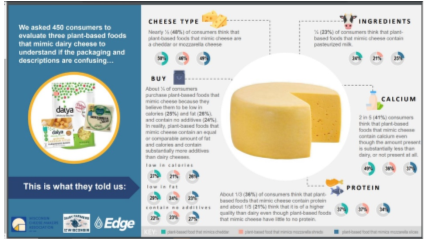 |
Customer confusion
Research has shown that imitation dairy products do confuse customers. For example, a national survey commissioned by Wisconsin dairy groups found that customers are confused about whether imitation cheese products are indeed dairy foods and whether they carry the same nutritional value. Some of the findings, which were released in 2019:
- One-quarter of customers mistakenly think plant-based products labeled as cheese contain milk.
- One-third of customers believe that the products contain protein, and 21 percent think that it is of a higher quality than dairy even though the imitations have little to no protein. Real dairy cheese has 7 grams of protein.
- One-quarter of customers purchase imitation cheeses because they believe them to be low in calories and fat and without additives. In reality, these plant-based foods contain an equal or comparable amount of fat and calories and substantially more additives than dairy cheeses.
Farmer Led Efforts Pay Dividends
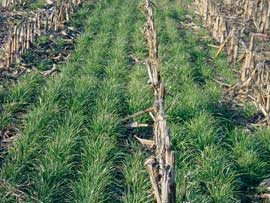
A conservation movement is growing in the Sheboygan River Basin, and a new analysis shows that modern farming practices are on the right track for reducing harmful runoff into streams and lakes.
Innovative practices adopted by members of the Sheboygan River Progressive Farmers (SRPF) are significantly reducing the chances of phosphorus and soil leaving the fields, according to an analysis shared by the state Department of Agriculture, Trade and Consumer Protection, the University of Wisconsin-Madison, and The Nature Conservancy.
Using survey data about farming practices among the farmer-led watershed conservation group’s members, the analysis estimated the potential impact of various practices compared to more conventional methods on typical crop and livestock operations in Sheboygan and Fond du Lac counties. The findings show, for example, that farmers using strip-tillage and no-tillage potentially reduce phosphorus runoff from farm fields by 43 percent and soil erosion by 42 percent.
Stopping phosphorus and soil sediment from leaving the fields improves water quality. For example, every pound of phosphorus that reaches a stream or lake can potentially cause the growth of up to 500 pounds of algae, degrading the waterway.
 Joe Wagner Crop Farmer Leader |
“It is great to see some of the good things our SRPF members are doing to protect the land and water in our farming communities,” Joe Wagner, a crop farmer who leads the group, said.
The five-year-old nonprofit group has grown to 30 farmer-members, who represent 20,671 acres and 7,486 dairy, beef and swine animals. The group collaborates with university researchers, environmental groups and community leaders, and they hold field days to demonstrate various practices.
“I was impressed that, even in the midst of a pandemic, Sheboygan River Progressive Farmers members found creative, safe ways to hold field days to share the conservation practices they were trying and what they were learning,” Steve Richter, agricultural strategies director at The Nature Conservancy, said. “I believe the increases in the number of members and acres in conservation practices from one year to the next can be attributed to the willingness of the SRPF members to share the benefits.”
SRPF members are regularly practicing other conservation techniques as well, like soil sampling, nutrient management plans and splitting the application of nitrogen fertilizer to times when the crops are growing and can best utilize it. Through the years, cover crops and no-till planting have been adopted by nearly every member of the group. This illustrates how members are helping each other find ways to make conservation practices work within their operations.
“The percent reductions in phosphorus and soil loss we are seeing in this survey are significant,” Richter said. “The water quality challenge we face is substantial, but the efforts of Sheboygan River Progressive Farmers’ members, and the efforts of all the farmer-led groups in Wisconsin, are making a positive impact.”
CONSERVATION PRACTICES
SRPF farmers have made noticeable changes to their practices. The most recent numbers (2019):
- 12,719 acres of conservation tillage practices (either strip-till or no-till planting)
- 20,363 acres covered by nutrient management plans
- 5,499 acres of cover crops
- 5,975 acres of low-disturbance manure injection
MORE ABOUT THE ANALYSIS
The analysis was completed as part of a conservation benefits tracking project initiated by the Wisconsin Department of Agriculture, Trade and Consumer Protection to evaluate effects of the state’s Producer-Led Watershed Protection Grants Program. The initiative was developed in collaboration with the University of Wisconsin-Madison Department of Soil Science and The Nature Conservancy. Wisconsin’s SnapPlus nutrient management planning software was used to calculate the potential annual phosphorus loss and soil erosion on fields when farms include practices such as cover crops and reduced-tillage.
While not every conservation practice provided significant reductions for each scenario, below are examples of the amount of phosphorus loss and soil erosion that can be avoided with the adoption of practices on agricultural landscapes in Sheboygan and Fond du Lac counties. Acreages of practices are based on the average number of acres implemented on SRPF member farms in 2019.
It is important to note that the calculations below are based on comparisons of generalized systems, not actual farms, and do not take into account the other watershed variables that impact how sediment and phosphorus make their way into a stream or lake.
For comparison, a mid-size dump truck can carry 10 tons of sediment, and 1 pound of phosphorous in a waterway has the potential to cause the growth of up to 500 pounds of algae.
Dairy farm with a corn silage, soybean and alfalfa rotation adopting 170 acres of small grain cover crops following corn silage and soybeans
Phosphorus loss reduction: 182 pounds
Soil erosion reduction: 213 tons
Corn/soybean farm adopting 165 acres of strip-tillage
Phosphorus loss reduction: 322 pounds
Soil erosion reduction: 330 tons
Corn/soybean/winter wheat farm adopting 264 acres of no-tillage
Phosphorus loss reduction: 378 pounds
Soil erosion reduction: 401 tons
U.S Dairy Sustainability Awards Seek Nominees for 10-Year Anniversary Class
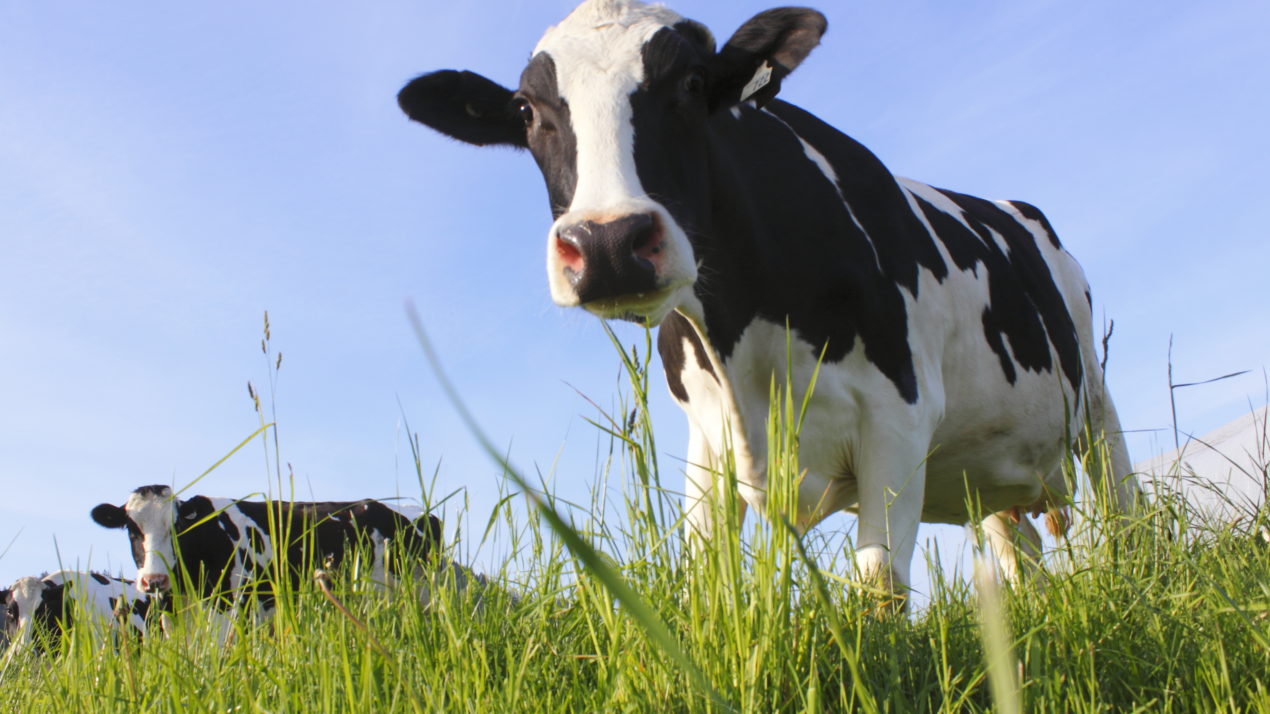
The U.S. Dairy Sustainability Awards – celebrating its 10-year anniversary – is seeking nominations for its Class of 2021.
The farmer-founded Innovation Center for U.S. Dairy, which unites the industry through a shared social responsibility platform, launched the awards to honor exceptional farms, businesses and partnerships for their socially responsible, economically viable and environmentally sound practices and technologies that have a broad and positive impact.
More than 70 winners from 250-plus nominees have been recognized over the past decade. They serve as examples of the dairy industry’s commitment to social responsibility, including the 2050 Environmental Stewardship goals announced last year. The goals, set by the Innovation Center through extensive industry and stakeholder collaboration, seek to achieve carbon neutrality, optimize water usage and improve water quality by 2050.
“Every award winner exemplifies the best of dairy sustainability and ingenuity, providing useful case studies for the dairy community as it moves forward to meet industrywide commitments, including dairy’s 2050 Environmental Stewardship goals,” said Barbara O’Brien, president of the Innovation Center for U.S. Dairy. “We’re excited to honor our next class of winners during this milestone year for both the awards program and the Innovation Center.”
The deadline for award submissions is March 26 and they can be submitted at www.USDairy.com/2021Awards. There is no fee to enter. All farms, companies and organizations involved in the U.S. dairy industry and engaged in collaborative and sustainable dairy-related practices are eligible to submit nominations in the following categories:
Dairy Farm Sustainability
The Outstanding Dairy Farm Sustainability category recognizes farmers for practices and technologies that demonstrate exemplary economic, environmental and/or social benefits and continuous improvement in dairy production. Successful nominations take a holistic approach to sustainability and provide replicable results that can advance on-farm dairy leadership and inspire positive change industrywide.
Processing and Manufacturing Sustainability
The Outstanding Dairy Processing and Manufacturing Sustainability category recognizes demonstrated steps to innovate, measure and communicate progress within the triple bottom line of sustainability. It provides replicable success stories to benefit the dairy community and to inform continuous improvement industrywide.
Community Impact
The Community Impact category commends efforts that improve lives and communities through positive impacts on health and wellness, hunger relief, workforce development, community volunteering and investment, and/or environmental stewardship. Successful nominations demonstrate how farms, cooperatives, processors or other dairy community stakeholders (either collaboratively or as a single entity) develop practical and effective solutions to shared challenges and goals of the communities in which they live and work.
Supply Chain Collaboration
The Supply Chain Collaboration category celebrates collaborative and market-based partnerships to demonstrate that truly sustainable outcomes come when all parts of the supply chain are involved in finding solutions. This award highlights farm-to-fork engagement through a collaborative farm, cooperative processor, and/or retail/foodservice partnership to benefit all involved and to provide best-in-class examples of sustainable dairy supply chains.
The 2021 winners will receive:
- An official commemorative plaque
- Recognition during June Dairy Month with members of the U.S. dairy community, media and other stakeholders
- National and local recognition of their stories and passion for sustainability via media
- A featured case study on usdairy.com to share insights and lessons learned with industry peers
- Opportunities to work with others in the dairy community to help advance sustainability
An independent panel of judges evaluates all nominations based on measurable results, demonstrated innovation and learning, and the potential for other dairy farms and businesses to adopt the practices.
General Signup for Conservation Reserve Program Extended
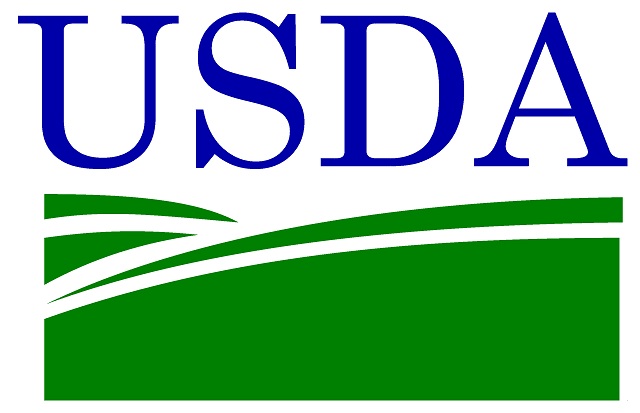
The U.S. Department of Agriculture (USDA) is extending the Conservation Reserve Program (CRP) General Signup period, which had previously been announced as ending on Feb. 12, 2021. USDA will continue to accept offers as it takes this opportunity for the incoming Administration to evaluate ways to increase enrollment. Under the previous Administration, incentives and rental payment rates were reduced resulting in an enrollment shortfall of over 4 million acres. The program, administered by USDA’s Farm Service Agency (FSA), provides annual rental payments for 10 to 15 years for land devoted to conservation purposes, as well as other types of payments.
Before the General CRP signup period ends, producers will have the opportunity to adjust or resubmit their offers to take advantage of planned improvements to the program.
“The Conservation Reserve Program provides a tremendous opportunity to address climate change both by retiring marginal cropland and by restoring grasslands, wetlands, and forests,” said Robert Bonnie, Deputy Chief of Staff, Office of the Secretary. “CRP has a 35-year track record of success beyond just climate benefits, by providing income to producers, improving water quality, reducing erosion, and supporting wildlife habitat and the hunting and fishing opportunities that go along with it. By extending this signup period, we’ll have time to evaluate and implement changes to get this neglected program back on track.”
As one of the largest private-lands conservation programs in the United States, CRP provides both economic and conservation benefits by taking land out of agricultural production. Program successes include:
· Sequestering in soils and plants over 12 million metric tons of carbon dioxide equivalent (CO2e), or about the same amount that the entire state of Delaware emits annually.
· Preventing more than 2 billion tons of soil from being blown away by wind erosion over the life of currently enrolled acres.
· Reducing phosphorous reaching streams by almost 85 million pounds, nitrogen by nearly 450 million pounds, and sediment by over 160 million tons in 2020 alone.
· Creating more than 2.3 million acres of restored wetlands while protecting more than 177,000 stream miles with riparian forest and grass buffers, enough to go around the world seven times.
· Establishing over a half million acres of dedicated pollinator habitat and nearly 15 million more acres of diverse plantings that provide forage for pollinators.
· Increasing populations of ducks and other game birds, prairie chickens, and such grassland songbirds as Baird’s Sparrow. CRP in the Northern Great Plains supports an estimated 8.6% of the grassland bird population.
· Increasing habitat that supports economic opportunities, such as job creation, related to hunting and fishing activities.
This signup for CRP gives producers an opportunity to enroll land for the first time or re-enroll land under existing contracts that will be expiring Sept. 30, 2021. All interested producers, including those on Indian reservations and with trust lands, are encouraged to contact their local USDA Service Center for more information.
USDA is an equal opportunity provider, employer and lender.
Meat Sector Shows Cautious Optimism
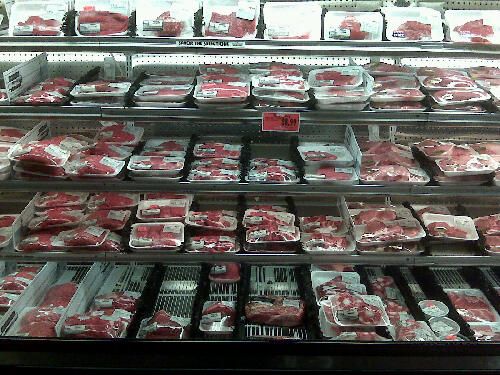
Prepared and written by Jeff Swenson, DATCP Livestock and Meat Specialist. The Market Update draws information from several sources, including trade publications, radio broadcasts, agricultural news services, individuals involved in the industry as well as USDA NASS and AMS reports.
There’s cautious optimism in the meat sector. The optimism comes from the idea both hog and cattle supplies will tighten in the weeks ahead. The restaurant performance index rose 1.1 percent in December. The US economy added 49,000 jobs in January while unemployment dropped to 6.3 percent. Domestic and international meat demand has been strong. Producers have been looking for signs of good news amid rising input costs.
Cash cattle ended last week $2.00 to $3.00 higher and the higher prices have held into this week. Prices may not be enough for cattle feeders to realize a profit, however. Estimated cattle harvest last week was 653,000 head, 2.4 percent above a year ago. The prevalent opinion seems to be the large supply of cattle will soon be behind us. The average carcass weight for beef breed steers was 896.5 pounds according to the latest report, and that’s two pounds below the previous week, but sill 18 pounds heavier than a year ago. The beef cutout was $233.95 on Friday, January 29 after a strong week of gains. The cutout hasn’t been this high at this time of year since the winter of 2014-2015. Export orders for US raised beef totaled 29,900 pounds according the latest export report.
It’s still hard to comprehend that now, 10 months after the first processing facility temporarily closed due to COVID-19, we are at the end of the butcher hog backlog. Butcher hog carcass weights are beginning to decrease. We can still argue that the backlog was or wasn’t as large as the worst-case estimate, but everyone will agree it’s good to have worked through the wall of pigs we struggled with so much of last year. Harvest last week was estimated at 2.658 million head, 1.4 percent below a year ago. Cash hogs on a carcass basis were $2.00 higher last week, but did soften late this week. It was another good week for pork export orders, as they totaled 46,300 metric tons.
The number of beef cows in Wisconsin on January 1 was even with a year ago at 310,000 head. The beef cow herd nationally dropped by less than 1 percent totaling 31.2 million head. The number of cattle and calves in Wisconsin feedlots were up 4 percent at 250,000 head. While milk cows were unchanged in Wisconsin, totaling 1.26 million head, the national dairy cow herd grew 1 percent to total 9.44 million head. Cattle numbers came in higher than early estimates, while the nation’s calf crop at 98.7 percent compared to the previous year was lower than industry expectations.
Wisconsin shepherds grew the state’s sheep flock by 5 percent during 2020 to total 69,000 head. Market sheep and lamb numbers grew by 13 percent to 17,000 head. Wisconsin’s lamb crop was 60,000 head in 2020. Wool production was reported at 345,000 pounds. All sheep and lambs inventory in the United States on January 1, 2021, totaled 5.17 million head, down 1% from 2020. Breeding sheep inventory at 3.78 million head on January 1, 2021, decreased 1% from 3.81 million head on January 1, 2020.
Choice beef breed steers and heifers at Wisconsin and surrounding state auction markets were $2.00 to $3.00/cwt higher bringing $98.00 to $108.00/cwt. High-yielding, high-grading cattle sold higher with a top of $115.00 /on a handful of lots. Choice and Prime Holstein steers were higher at $89.00 to $96.00/cwt. There were reports of high-yielding, calf-fed, Holstein steers with an overnight stand selling higher with a few reports of some breaking the $100.00/cwt barrier. Dairy x Beef steers were mostly $90.00 to $100.00/cwt. Cows were higher at $40.00 to $60.00/cwt. Blemish free cows in fleshier condition were selling into the upper $60.00s, while doubtful health and thin cows sold below $30.00/cwt. Dairy breed bull calves were mostly steady at $40.00 to $90.00/head with heavier, well cared for calves bringing $90.00 to $140.00. Beef and Beef Cross calves brought up to $285.00/cwt. Market lambs remain lightly tested with the best cut of lambs 110 to 140 pounds topping in a range of $160.00 to $220.00/cwt on new crop. Old crop lambs sold in a wide range with the high at $165.00.
Century and Sesquicentennial Farm Applications Due March 1st
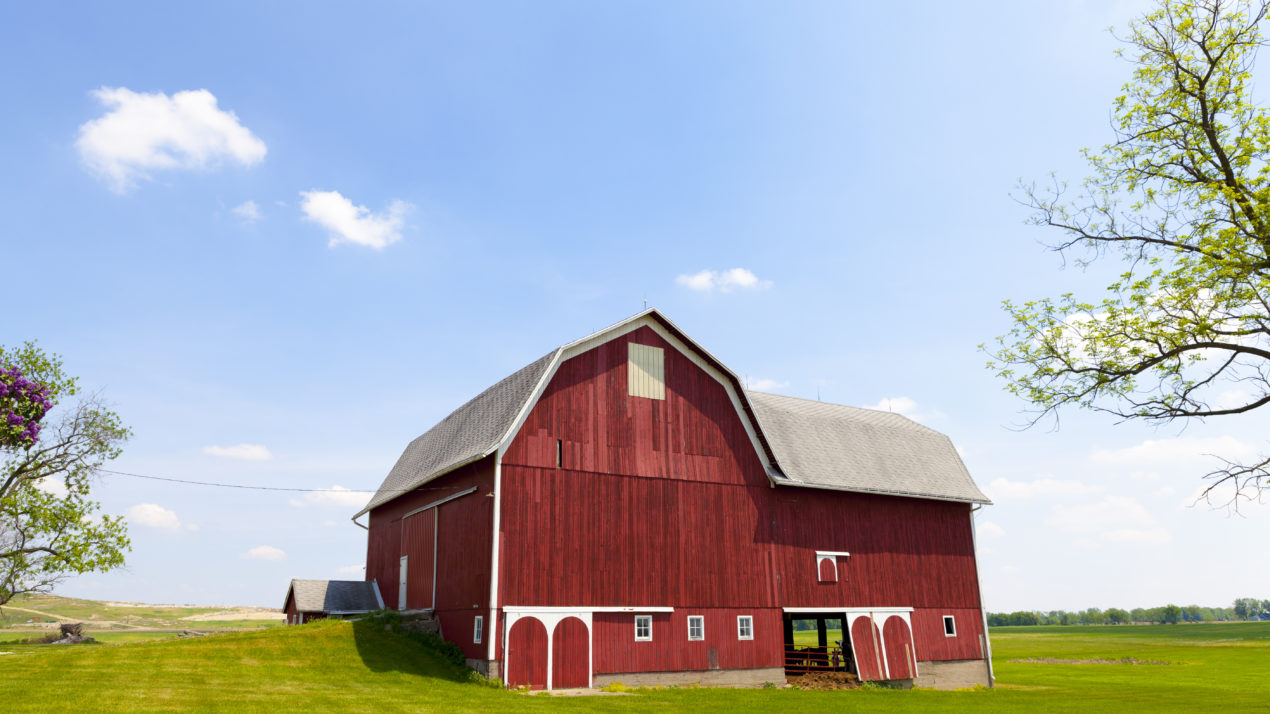
Applications are now available for the 2021 Century and Sesquicentennial Farm and Home Award, a prestigious award given to families who have dedicated their life to Wisconsin farming for 100 or 150 years. The 2021 Wisconsin State Fair, presented by UScellular, will take place Thursday, August 5 through Sunday, August 15 at Wisconsin State Fair Park in West Allis.
To qualify for the award, families are required to provide proof of continuous family ownership of a property in the state of Wisconsin for either the last 100 or 150 years. All property owners will be honored at a special Century and Sesquicentennial Farm and Home Award Program.
Applications for the Century and Sesquicentennial Farm and Home Award are available now and must be postmarked by the application deadline, Monday, March 1, 2021. Applications are not available online and only one certificate may be issued per property.
To request a copy of either application, contact jill Albanese, Director of Competitive Exhibits via phone at 414-777-0580, via email at [email protected] or write to:
Century or Sesquicentennial Farm & Home Program: 640 S. 84th Street, West Allis, WI 53214.

